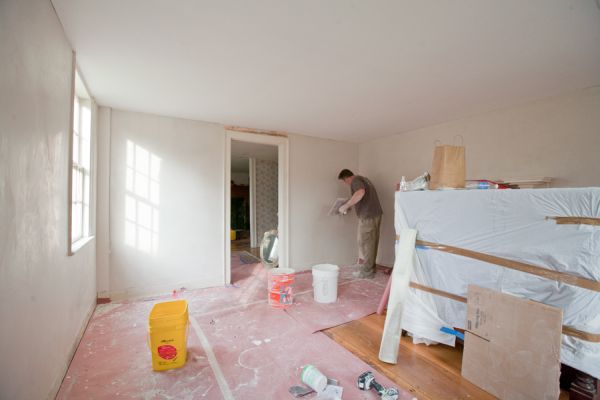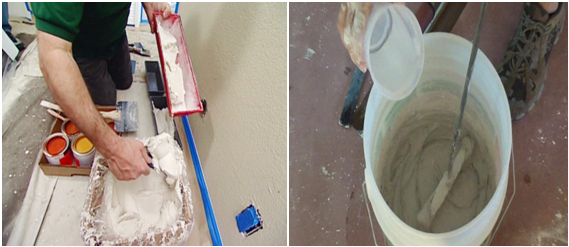
The common belief is that ready-mix joint compound that is available arrives ready to be used straight from the bucket. There could not have been a bigger misnomer. One needs an almost professional hand to mix the compound before it can be used for a job so that there is as minimum sanding as possible. The powdered setting compound chemically hardens when mixed with water. In order to be environmentally friendly, make sure that your purchase does not contain preservatives, volatile organic compounds (VOCs), mildewcides and fungicides. The binders used should be natural and the fillers must be inert. Some joint compounds are also known to create allergies. Ensure that your compound is hypo-allergenic also. Once you get such a ready-mix or setting-type compound, you are ready to begin.
Resources required
- The ready-mix compound or setting-type compound
- Soft water
- Drywall mixing paddle
- Mud masher
- Mixing paddle
- Bathroom scale
Time required
The time required varies from 20 minutes to an hour depending on what kind of compound you are using and your skill level.

Instructions
- For ready-mix compound
a. Open the new bucket of the ready-mix compound. It will appear slightly mixed and dry with water on the top. Make use of the mud masher or the mixing paddle at a low speed of 450-650 rpm. Do this till you feel the compound getting fluffed up.
b. In order to make the applying tape and to ensure that the second and third coats are easier to put, add a few ounces of cool water into the mix.
c. The amount of water added as you are mixing is vital to successfully obtain the perfect mix. The consistency of the mix should be like that of soft butter.
d. Once you obtain the right consistency, the compound is ready to use. In case you want to store it, scrape along the sides of the compound bucket to level. Then, cover with a wet rag on the surface and create a thin water-layer above it. Place a plastic wrap and seal the bucket securely with the lid. This will prevent the compound from drying out.
- For setting-type compound
a. Weigh out the desired amount of the compound from the sack into the bucket. Make use of the bathroom scales or kitchen scales to do the same.
b. According to the instructions on the bag, take the required quantity of water in a second bucket. Always add the powder to the water and not the other way round. Otherwise, you will not get the uniform consistency. Shake the powder at first. Then mix thoroughly.
c. After mixing the powder thoroughly, wait for the time specified on the bag. This can very between 10 to 20 minutes. Keep adding a little water and mixing to maintain the smoothness and consistency.
d. While using the compound, if you find any stiff compound, throw it away. It is no use trying to rescue it with water. The setting-type compound is to always be mixed right before usage. You cannot store it in the mixed form.
Things to look out for
- The compounds available in the market have set-times varying from 5 to 210 minutes. The time specified on the bag is an average figure which will can change depending on temperature and humidity.
- While cleaning up the setting-type compounds, never flush down the drain. They will block the drainage and it becomes very difficult to clear the clog.
- Do not add too much water to the ready-mix. If it gets soupy in thickness then it becomes very difficult to use it successfully.
- Do not try to estimate or eyeball the amount of compound to be taken out of the sack. Weighing the setting-type compound is always the safe option.
- Do not mix too much or too fast when it comes to the setting-type compound. This will hasten the set-times of the compound.
Conclusion
While you are sealing the joints in your dry wall, it is always recommended that the mud or sealing compound you use be earth-friendly. This means that the patching material, texture mud, stain stop primer, drywall primer, the tape mud and the bed mud be Eco-friendly. This is because the home that you live in should be chemical-free and allergy-free. Paying a bit more to get such a compound is important for after all, is not health the greatest wealth?



